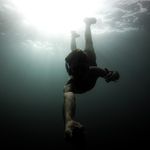- Home
- Audition
- Discussions
- My Mic is Jumping Randomly in Audition
- My Mic is Jumping Randomly in Audition
My Mic is Jumping Randomly in Audition
Copy link to clipboard
Copied
Hi im new to audition forums. My name is Dax and I just started a podcast so thought I use auditon.
My question is when I record with my
Blue Microphones Snowball iCE (https://www.amazon.ca/gp/product/B014PYGTUQ/ref=ppx_yo_dt_b_asin_title_o00_s00?ie=UTF8&psc=1)
My audio jumps and completly changes sound at some points. Let me get some examples
In my podcast listen to the audio at timestamp 2:00
Compared to audio at 29:10
I find there is a wierd echo sound. on my mic (im the guy with the headband and green shirt)
I also had issues with delay. I shot the audio in audition, and video on my camera. Synced them at the start but then as I watched later in the video the audio became 1 second out of sync.
Idk if anyone knows whats happening. It could just be cause I have trash 60 dollar usb mics but let me know if you do thank you.
DAX BRULE
Copy link to clipboard
Copied
Can't tell anything, because there is no link to your podcast - just a link to a microphone on amazon. What you actually did was align the mic and camera at the start, but you definitely didn't sync them - because if you had, you wouldn't have this issue. Unfortunately there's no way of syncing the mic and the camera - that requires a direct sync connection between them and that facility only comes on pro cameras, and there are some complications with using it anyway.
What goes wrong is that the clock signal in the mic, and the clock signal coming from your camera are very slightly in error. This is normal; there's a tolerance allowed and the amount of drift you are talking about is quite reasonable over half an hour, being about 0.055%. Some sample rates are actually difficult to arrive at - for instance, 44.1k samples generated with reference to the USB clock (which is what you need to do with a USB mic) always comes out with about 0.04% error anyway, because of the awkward numbers involved.
As for your wierd sound - well, we can't comment until we've heard it.
Copy link to clipboard
Copied
Copy link to clipboard
Copied
Copy link to clipboard
Copied
I can't hear a massive difference in sound between 2.00 and 29.10, but there are significant changes in the sound as you get further from and closer to the mics - and a lot of room tone from what looks like a pretty small space. This almost certainly explains the 'sibilant' sound that you are getting overall - this is a room issue; everything's coming back off the walls and is significantly interfering with the direct sound. Is that a reflection of a window I can see on the back wall? They can make this sort of problem a lot worse, unless the curtains are closed.
And I think that's the root of your sound changes - massive differences occuring between the amount of direct and reflected sound in the space, and you don't have to move very far for these changes to occur. Try recording in a larger space, so you're further from the walls, and ideally get as much absorbing material in front of any wall that's parallel to another one as possible - they always cause the worst problems, especially if they are close (like the ones in the video appear to be).
Find more inspiration, events, and resources on the new Adobe Community
Explore Now